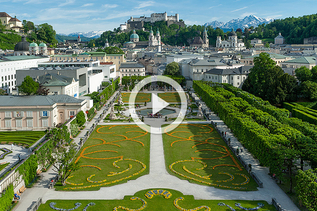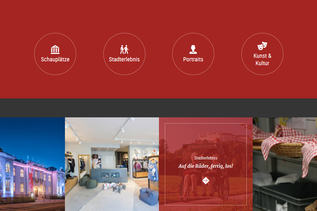
Kapuzinerberg
La montagna Kapuzinerberg, alta 640 m, si erge sulla riva destra del Salzach. La fitta foresta attorno al culmine della montagna è un'area ricreativa molto apprezzata per escursioni e sportivi. I sentieri portano oltre cappelle fino al monastero cappuccino e al Franziskischlössl.
Dal Linzer Gasse, il sentiero passa attraverso la Porta di Francesco, oltre undici cappelle della Via Crucis, fino al monastero cappuccino. Il monastero è oggi il primo noviziato comune di tutte le province cappuccine di lingua tedesca. Accanto al monastero si trovano la chiesa del monastero e la chiesa di Imberg, così come la Hettwerbastei (punto panoramico) con una vista unica sulla fortezza di Hohensalzburg e sulla città vecchia.
La mura del Kapuzinerberg, che ha 400 anni, o mura difensive, circondano il monastero cappuccino partendo dalla Porta di Felix e si estendono intorno a tutto il versante occidentale, meridionale ed orientale della montagna. Al punto nord del tracciato delle mura si trova il "Franziski-Schlössl", costruito nel 1629 sotto l'arcivescovo principe Paris Lodron. Inizialmente progettato come pura fortificazione, dal 1849 è stata gestita una trattoria che da allora è diventata una meta popolare per escursioni. Il sentiero verso il Franziski-Schlössl conduce attraverso affascinanti sentieri nel bosco o lungo le mura difensive.
Oltre al Franziski-Schlössl, è conosciuto anche il "Paschinger-Schlößl" al Kapuzinerberg 5. Qui, dal 1919 al 1934, visse il celebre scrittore Stefan Zweig. Un busto sopra la villa ricorda il famoso scrittore. Un altro busto, a pochi metri più in alto, mostra il genio forse più famoso della città: Wolfgang Amadeus Mozart.
Per gli arrampicatori, la ripida parete nord del Kapuzinerberg offre la migliore opportunità per scalare la montagna. L'uso del percorso ferrato “City Wall” è consentito da luglio a marzo. Nei restanti mesi, le attività di arrampicata non possono essere effettuate a causa della nidificazione di alcune specie di uccelli. Gli appassionati di sport possono usufruire dei noti sentieri urbani di escursionismo sul Kapuzinerberg come alternativa per il tempo libero.
Con un po' di fortuna, durante un'escursione sul Kapuzinerberg potrete vedere i camosci che vivono lì. Questa colonia di camosci nel mezzo della città è unica al mondo e si trova estremamente a suo agio sul Kapuzinerberg, disseminato di rocce. Il custode forestale cittadino responsabile a Salisburgo è anche cacciatore cittadino e si prende cura del benessere degli animali.
- attraverso la Imbergstiege dalla Steingasse (Percorso)
- dalla Franziskustor nella Linzergasse (Percorso)
- dalla Fürbergstraße a nord-est tramite il Doblerweg (Percorso)







































